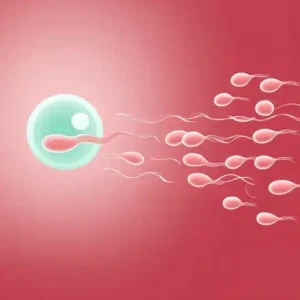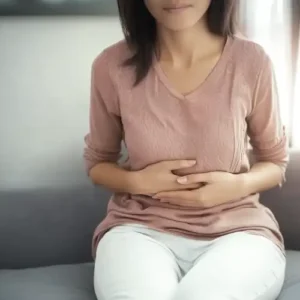When you are trying for a baby, it’s often a good idea to try and look out for some tell-tale physical signs of ovulation. Typical signs of ovulation could be feeling cramps on one side of your body, finding your breasts are tender or your cervical mucus volume increasing. You may also find that you spot lightly during this time. This latter sign is known as ovulation spotting and many experts consider this a great sign that you are fertile.
Why Does Ovulation Spotting Occur?
There is no one reason why ovulation spotting happens. For some, it is when the egg ruptures the follicle at the time of ovulation. Experts believe that the follicle bursts through and causes light bleeding. Women may notice that there is some brown blood at the time of ovulation. This blood is considered to be older blood, because of its colour, but the blood can also turn this colour as it leaves the body.
This type of spotting can also happen due to changing hormones at this point in the cycle. Before ovulation starts, the follicles grow and mature, producing more oestrogen. This then causes the LH levels to surge; another ovulation hormone. As the LH levels surge, it is a sign for the egg to pass through the follicle. This sharp rise in the oestrogen levels may cause some spotting to occur.
It is important to remember that not all women will experience ovulation spotting. Some may have a slight twinge in the lower abdomen, while others may not feel anything at all. However, if spotting or bleeding becomes heavy, it may be a sign of another underlying condition and medical attention should be sought.
Understanding how the body works during each stage of the menstrual cycle can be helpful for women who are trying to conceive or want to monitor their overall reproductive health. If ovulation spotting occurs each month, it may be an indication that the woman is ovulating regularly. However, it is also important to note that there are other methods of tracking ovulation that may work for some women, such as basal body temperature charting or ovulation predictor kits.
Overall, ovulation spotting is a normal occurrence for some women and is usually nothing to worry about. However, if there are concerns or changes in menstrual cycles, it is always best to consult a healthcare provider for advice.
When Will Ovulation Spotting Start To Happen?
Most women will find that the ovulation spotting starts either just before or during the ovulation process. For some it is a light, normal coloured bleed, while other women experience a pinkish or brown colour. There are also times that it will mix with the cervical mucus that looks like the colour of raw egg-whites.
While there are other reasons for ovulation spotting occurring, if it happens right before or during the time that you expect, this is a good sign that you are ovulating and it is the perfect time to get pregnant.
Common Misconceptions About Ovulation Spotting
Let’s bust some myths about ovulation spotting! You might’ve heard that spotting always means something’s wrong – it doesn’t. While some women experience this mid-cycle surprise every month, others never see it at all. Here’s the thing: your body’s as unique as your fingerprint.
Think of ovulation spotting like a birthday card from your ovaries – it’s just one way they might tell you “Hey, we’re working!” But don’t panic if you’re not getting these monthly notes. Plenty of women conceive without ever noticing spotting. What matters more is tracking your overall fertility signs.
I’ve seen plenty of women worry that ovulation spotting means they can’t get pregnant. Nothing could be further from the truth! In fact, for some lucky folks, it’s like nature’s built-in fertility signal. Just remember – if you’re spotting heavily or it lasts longer than a couple of days, that’s your cue to check in with your doctor. They’re there to help you decode your body’s unique language.
Getting The Timing Between Intercourse And Ovulation Spotting Right
Your spotting is likely to happen for around two days and then ovulation begins. When you find that you are spotting, this is the best time to have intercourse to get pregnant. You should also invest in a test to predict ovulation to help increase the chances of having intercourse at the right time.
Other signs to time it right include the cervical mucus turning the colour of raw egg-whites or having some pain on one side. As ovulation starts, your cervical mucus will get stretchier and thinner. Once the mucus dries, the ovulation spotting will usually stop. You need to get intercourse as close to the start of ovulation as possible.
Have intercourse over the next few days after ovulation spotting has happened for the best chances. It is also worth keeping a BBT chart (using a basal thermometer) so that you can confirm your ovulation.
This post first appeared in 2013. It was last updated in November 2024
Zoom Baby is a leading supplier of Pregnancy Tests and Ovulation Test Kits





